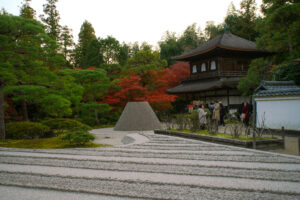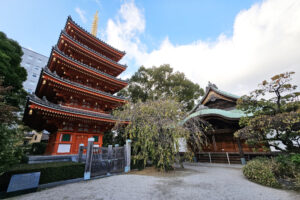Exploring the vast landscape of Japan’s music scene reveals a world where tradition and innovation converge, creating a sonic tapestry as diverse and dynamic as the country itself. From the deeply emotional strains of Enka to the cutting-edge beats of Shibuya-kei, Japanese music encompasses a wide array of genres, each with its unique flavor and history. This exploration into the diverse sounds of the Japanese music scene not only showcases the rich cultural heritage of Japan but also highlights the country’s influential role in shaping global music trends. Let’s delve into the multifaceted world of Japanese music, unveiling the genres that define and diversify its musical panorama.
1. Unveiling the Rich Tapestry of Japanese Music
The Japanese music scene is a kaleidoscope of sound, embodying centuries of cultural evolution and innovation. From the serene and soulful melodies of traditional instruments to the pulsating rhythms of modern genres, Japan’s musical landscape is both vast and varied. It’s a scene where ancient traditions gracefully coexist with contemporary trends, illustrating the country’s unique ability to merge the old with the new. This rich tapestry of sounds not only tells the story of Japan’s cultural history but also showcases its ongoing influence on the global music stage. As we explore the nuances of this vibrant scene, we discover music that resonates with the spirit of Japan, echoing through temples and techno clubs alike.
2. Traditional Tones: The Eternal Sway of Enka
Enka, with its melodramatic melodies and themes of love, loss, and longing, holds a special place in the heart of Japanese music. Originating in the late 19th century, Enka has endured through the ages, its timeless appeal lying in its ability to evoke deep emotional responses. This genre, characterized by its distinctive use of the pentatonic scale and a vocal style that emphasizes vibrato, serves as a bridge between the past and present, offering listeners a glimpse into the soul of traditional Japanese music. Despite the influx of modern musical styles, Enka remains a beloved genre, its enduring popularity a testament to its deep cultural significance and emotional depth.
3. J-Pop Phenomenon: A Global Musical Export
J-Pop, or Japanese pop music, has become one of Japan’s most famous cultural exports, captivating audiences worldwide with its catchy melodies, high-energy performances, and innovative production techniques. Since its emergence in the 1990s, J-Pop has evolved into a global phenomenon, spawning a multitude of idol groups, solo artists, and dedicated fans across the globe. Its influence can be seen in the international success of acts like Perfume, Arashi, and Babymetal, whose tours and albums have garnered critical and commercial acclaim. J-Pop’s widespread appeal lies in its unique blend of Western pop influences with Japanese cultural elements, creating a sound that’s both familiar and distinctly original.
4. The Resurgence of City Pop in Modern Times
City Pop, a genre that originated in the 1980s, has experienced a remarkable resurgence in recent years, finding a new audience through the internet and streaming platforms. Characterized by its smooth, groovy sound that encapsulates the urban experience, City Pop evokes the glamour and excitement of metropolitan life in Japan. Artists like Tatsuro Yamashita and Mariya Takeuchi, once icons of their era, have seen their music gain a cult following among younger listeners, thanks in part to the genre’s nostalgic appeal and timeless quality. This resurgence not only highlights the cyclical nature of music trends but also underscores the enduring charm of City Pop’s breezy melodies and sophisticated arrangements.
5. Visual Kei: Japan’s Unique Rock Theatre
Visual Kei, a genre that combines rock music with elaborate visuals and theatrical performances, emerged in the 1980s as a bold statement against conventional norms. Characterized by its members’ striking attire, makeup, and flamboyant stage personas, Visual Kei acts like X Japan, and the GazettE have cultivated a dedicated fan base both in Japan and internationally. This genre is not just about the music; it’s an immersive experience that blends sonic elements with visual artistry, challenging traditional notions of gender and performance. Visual Kei’s impact extends beyond its auditory appeal, influencing fashion, lifestyle, and popular culture, and solidifying its status as a uniquely Japanese contribution to the global music scene.
6. The Undying Spirit of Japanese Punk Scene
The Japanese punk scene, with its raw energy and DIY ethos, has been a vibrant part of Japan’s music landscape since the late 1970s. Bands like Shonen Knife and The Blue Hearts have led the charge, delivering music that is both rebellious and refreshingly authentic. This genre’s appeal lies in its unpolished sound and its ability to voice social and political discontent, resonating with those who feel marginalized or disenchanted. Despite its underground roots, Japanese punk has exerted a considerable influence, inspiring a new generation of musicians and fans drawn to its spirit of resistance and independence.
7. Shibuya-kei: From Tokyo Streets to the World
Shibuya-kei, named after the trendy Shibuya district in Tokyo, emerged in the 1990s as a genre that defied easy categorization. Blending elements of pop, jazz, bossa nova, and electronic music, artists like Cornelius and Pizzicato Five crafted a sound that was both eclectic and highly accessible. This genre’s playful experimentation and global influences mirrored the cosmopolitan vibe of Shibuya itself, attracting a worldwide audience with its sophisticated and whimsical sound. Shibuya-kei’s legacy lies in its demonstration of how local scenes can have a global impact, influencing artists and listeners far beyond Japan’s borders.
8. Kawaii Metal: Blending Cute with Heavy Metal
Kawaii Metal, or "cute metal," presents an intriguing fusion of heavy metal’s aggressive soundscapes with J-Pop’s catchy melodies and aesthetic of cuteness. Bands like Babymetal have been at the forefront of this genre, breaking traditional genre boundaries and challenging preconceived notions of what heavy metal can be. This unexpected blend has not only gained a substantial following within Japan but has also captivated audiences worldwide, showcasing the innovative spirit of Japanese music. Kawaii Metal’s success underscores the country’s talent for creating new and surprising musical hybrids, further enriching the global music landscape.
9. The Quiet Storm of Japanese Jazz Evolution
Japanese jazz has quietly become a force to be reckoned with, boasting a rich history that spans decades and a vibrancy that continues to thrive today. From the post-war era, when jazz clubs began to proliferate in cities like Tokyo and Osaka, to the international acclaim of artists like Hiromi Uehara and Takuya Kuroda, Japanese jazz has developed its distinctive voice. This genre’s evolution reflects a deep respect for jazz’s roots while also embracing innovation, resulting in a sound that’s both authentic and refreshingly contemporary. The global recognition of Japanese jazz artists not only highlights their technical prowess and creativity but also Japan’s significant contribution to the international jazz scene.
10. Ambient Explorations in Japan’s Electronic Scene
Japan’s electronic music scene offers a vast array of sounds, from the club-ready beats of techno and house to the more introspective realms of ambient music. Artists like Ryuichi Sakamoto and Hiroshi Yoshimura have become synonymous with ambient music, creating soundscapes that invite listeners to explore inner worlds and emotional landscapes. This genre’s minimalist approach, focusing on texture and atmosphere over traditional rhythm and melody, exemplifies the Japanese aesthetic of simplicity and depth. As it continues to evolve, Japan’s ambient music scene remains a wellspring of innovation, influencing electronic music globally with its distinctive approach to sound and space.
11. The Global Influence of Japanese Video Game Music
Japanese video game music has transcended its original context, becoming a vital part of the global music landscape. Composers like Nobuo Uematsu and Koji Kondo have written scores that are not only integral to the gaming experience but have also gained standalone recognition through concerts and album releases. This genre’s ability to evoke emotion and nostalgia has garnered a dedicated fanbase, with music from games such as "Final Fantasy" and "The Legend of Zelda" being celebrated worldwide. The global influence of Japanese video game music underscores the country’s broader impact on entertainment and culture, highlighting its role in shaping the sonic dimensions of the digital age.
12. Future Sounds: Emerging Trends in Japan’s Music Scene
As we look to the future, Japan’s music scene continues to evolve, with new genres and trends emerging at the intersection of technology, culture, and creativity. The rise of virtual idols and Vocaloid software represents the cutting edge of music production, blurring the lines between reality and digital creation. Meanwhile, the global spread of Japanese music via social media and streaming platforms has fostered a more interconnected world, where cross-cultural collaborations and influences enrich the musical landscape. As these trends unfold, the future of Japan’s music scene promises to be as dynamic and diverse as its past, perpetually pushing the boundaries of what music can be.
In traversing the diverse and vibrant landscape of Japan’s music scene, we encounter a world where tradition intermingles with innovation, creating a rich mosaic of sounds that encompass the heart and soul of Japanese culture. From the emotional resonance of Enka to the cutting-edge experiments of Shibuya-kei, each genre tells a story of cultural evolution, global influence, and artistic innovation. As Japan continues to shape and be shaped by the global music scene, its contributions ensure that the country remains at the forefront of musical exploration. The diverse sounds of the Japanese music scene not only reflect the country’s rich cultural heritage but also its ongoing quest to push the boundaries of creativity and expression.








